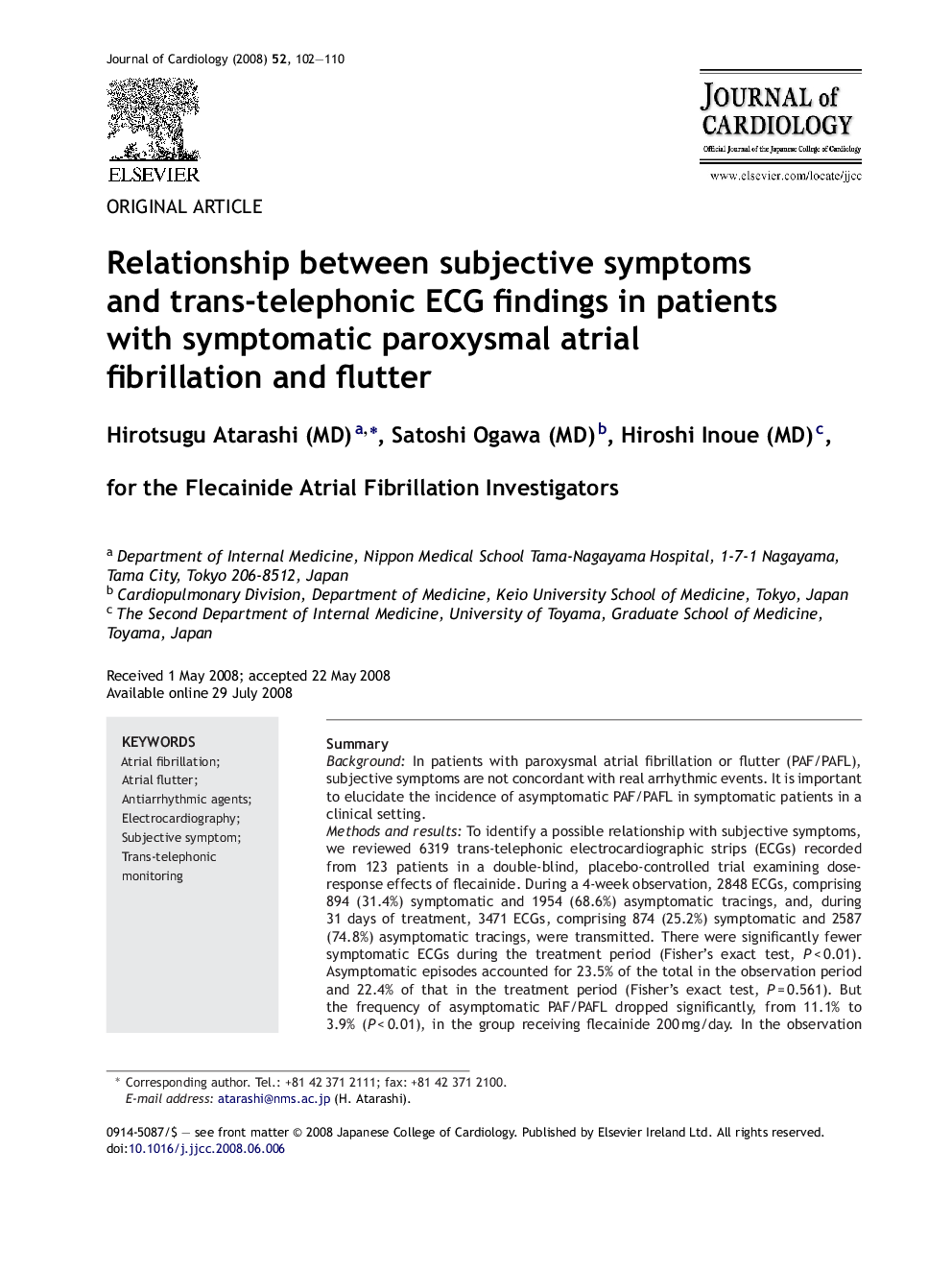| Article ID | Journal | Published Year | Pages | File Type |
|---|---|---|---|---|
| 2963831 | Journal of Cardiology | 2008 | 9 Pages |
SummaryBackgroundIn patients with paroxysmal atrial fibrillation or flutter (PAF/PAFL), subjective symptoms are not concordant with real arrhythmic events. It is important to elucidate the incidence of asymptomatic PAF/PAFL in symptomatic patients in a clinical setting.Methods and resultsTo identify a possible relationship with subjective symptoms, we reviewed 6319 trans-telephonic electrocardiographic strips (ECGs) recorded from 123 patients in a double-blind, placebo-controlled trial examining dose-response effects of flecainide. During a 4-week observation, 2848 ECGs, comprising 894 (31.4%) symptomatic and 1954 (68.6%) asymptomatic tracings, and, during 31 days of treatment, 3471 ECGs, comprising 874 (25.2%) symptomatic and 2587 (74.8%) asymptomatic tracings, were transmitted. There were significantly fewer symptomatic ECGs during the treatment period (Fisher's exact test, P < 0.01). Asymptomatic episodes accounted for 23.5% of the total in the observation period and 22.4% of that in the treatment period (Fisher's exact test, P = 0.561). But the frequency of asymptomatic PAF/PAFL dropped significantly, from 11.1% to 3.9% (P < 0.01), in the group receiving flecainide 200 mg/day. In the observation period, the positive predictive value of subjective symptoms was about 50%, and the sensitivity in predicting PAF/PAFL, around 80%. During treatment, these values did not change significantly, but negative predictive value (NPV) and specificity increased in the 200 mg flecainide group. In the analysis of each case, significant dose-response profiles were found in NPV (P = 0.019) and specificity (P = 0.041).ConclusionsAsymptomatic PAF/PAFL was not rare in symptomatic patients, and flecainide reduced both symptomatic and asymptomatic episodes.
